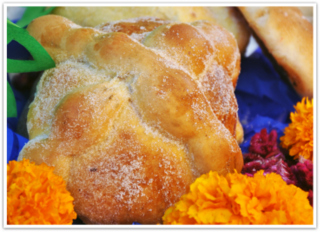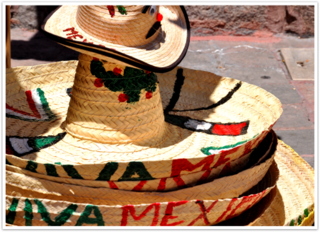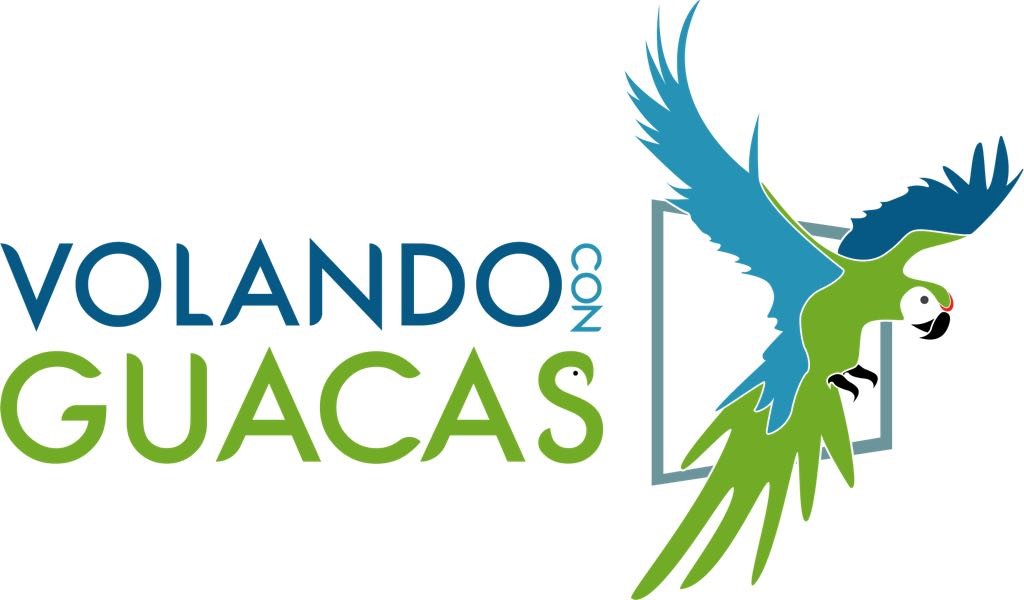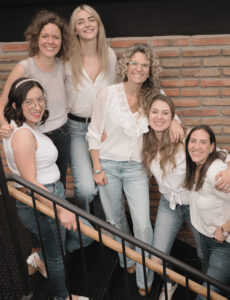
HOLIDAYS, CELEBRATIONS & TRADITIONS
When, where and how we celebrate in México
In Mexico people love to socialize and celebrate! There are festivals and traditions happening year round throughout the country. Don’t miss out on the festivities of the locals which include parades for village saints, celebrations dedicated to the harvest and the rainy season, unique cultural and traditional festivals as well as the national holidays. The best way to experience such highlights is in less touristy areas where you will be welcomed with friendly Mexican hospitality.
HOLIDAYS & CELEBRATIONS
| January | |
| 31. Dec./1. January | Año Nuevo – New year A unique custom are the 12 grapes that are eaten with each chime of the clock at midnight. Think of wishes for the new year and one will surely come true. |
| 6. January | Los Reyes Magos – Epiphany Day Traditionally, many children get their presents not on Christmas but on Epiphany Day. You also eat a “Rosca de Reyes” – a traditional cake decorated with candied fruit in which one or more small Jesus figures are baked. Anyone who finds the figure must buy tamales for the others on February 2, the Día de la Candelaria. |
| February | |
| 2. February | Día de la Candelaria – Virgin´s Day of Calendaria Parades and festivals take place throughout México on this day. Those who found a Jesus figure in their Rosca de Reyes must invite the others to eat tamales. (a Mesoamerican dish made from corn dough with different fillings). |
| 5. February | Día de la Constitución – Anniversary of the Constitution On February 5, 1917 the new constitution (Constitucion Politica de los Estados Unidos Mexicanos) was announced under President Venustiano Carranza. |
| 24. February | Día de la Bandera – Flag Day The day is celebrated in memory of the symbolism of the Mexican flag and stands for independence, freedom, unity and civil rights for all Mexicans. The colours stand for: green = hope, white = unity, red = blood of the national heroes. The eagle eating a snakes while sitting on a cactus, is based on an Aztec legend. A divine prophecy told the nomadic Aztecs to search for this symbol and to build its capital – now Mexico City – at this location. |
| March | |
| 21. March | Birthday of former President Benito Juarez |
| March or April | Semana Santa – Easter Week Easter is the main travel season for Mexicans. During Semana Santa (holy week) almost everyone travels and the hotels are fully booked months in advance. It is also a very religious holiday with numerous processions and pilgrimages across the country. The most important are in Patzcuaro, Iztapalapa (district of Mexico City), San Miguel de Allende and Aguascalientes. |
| May | |
| 1. May | Día del trabajo – Labour Day |
| 5. May | Batalla de Puebla – Battle of Puebla Anniversary of the Mexican victory over France at Puebla. |
| August | |
| 15. August | María Asunción – Assumption of the Virgin Mary is celebrated in Mexico with pilgrimages, festivals, dances and music. There are streets carpeted with flowers and midnight processions in the small town of Huamantla. |
| September | |
| 16. September | Día de la independencia – Independence Day Liberation from Spanish colonial rule is celebrated on Independence Day. On September 16, 1810, Pastor Miguel Hidalgo called for resistance against the Spaniards in the colonial town of Dolores Hidalgo in central Mexico. The Grito de Dolores (cry of Dolores) is still heard throughout Mexico in memory of this day: “Viva Mexico”! There are fireworks in most cities and delicous traditional food such as chiles en Nogada, enchiladas and of course tequila. The best way to experience this important holiday is where independence began – in the colonial cities of central Mexico. |
| October | |
| 12. October | Día de la Raza – Columbus Day The “Dia de la Raza” is also known as Columbus Day and commemorates the landing of the Italian seafarer Christopher Columbus on October 12, 1492 in the New World. |
| November | |
| 2. November | Día de los Muertos – Day of the Dead From the night of the 1st (All Saints Day) until the 2nd of November (Day of the Dead), the departed souls return – a nostalgic reason for every Mexican to celebrate and remember their loved ones. Families throughout Mexico go to the cemeteries to visit the graves and prepare colourful altars with offerings, flowers, candles and family momentos. |
| 20. November | Día de la Revolución – Revolution Day A national holiday commemorating the Mexican Revolution on November 20, 1910 against the dictator Porfirio Díaz. |
| December | |
| 12. December | Día de la Virgen de Guadalupe – Virgin of Guadalupe Day A week before this date, millions of Catholics make a pilgrimage to the Basilica de Guadalupe on the Tepeyac hill near Mexico City to commemorate the anniversary of the patron saint of México – the Virgin of Guadalupe. |
| 24. & 25. December | Navidad – Christmas. |
FESTIVALS & EVENTS
–
February
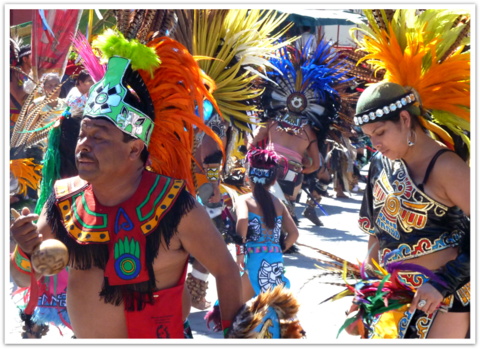 Carnival – Carnival in Mexico
Carnival – Carnival in Mexico
Mexico also celebrates Carnival in some regions. The festivals on the island of Cozumel, the Yucatán, Campeche, Veracruz and in Mazatlán are the most famous. In comparison to the German Carnival, the Mexicans pay special attention to their different cultures and traditions, making the celebrations colourful and loud. Especially on the coast, the Carnival has festive music and dancing similar to Rio de Janeiro.
You can find more detailled information here: http://www.mexico-reisen.info/allgemein/karneval-in-mexiko
March
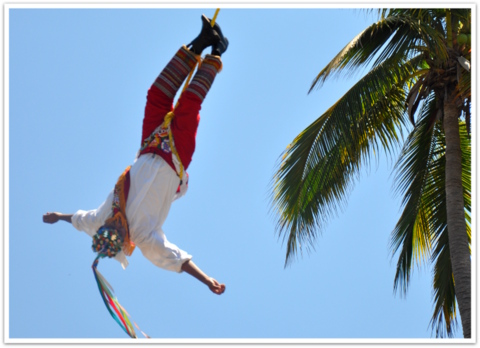 Cumbre Tajín Festival – El Tajin, Veracruz
Cumbre Tajín Festival – El Tajin, Veracruz
The idea of the Cumbre de Tajin festival in Papantla in the north of Veracruz is to preserve and spread the cultural and archaeological wealth of the holy city of El Tajín near the town of Papantla. It is one of the five most important Mexican cultural festivals and one of the 100 most important worldwide due to its excellent stage program and content, including rituals, alternative therapies, concerts, dances, lectures, exhibitions and demonstrations were offered.
April
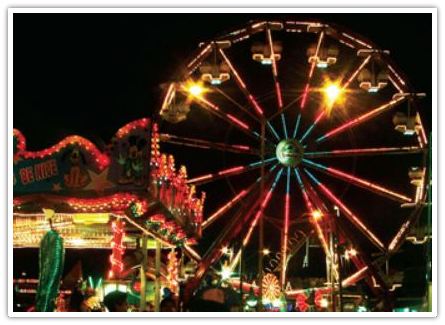 Fería de San Marcos – Aguascalientes
Fería de San Marcos – Aguascalientes
La Feria Nacional de San Marcos, takes place every year in April in the city of Aguascalientes and is the largest and most famous fair in Mexico. It is four weeks long celebrataes the feast day of San Marcus, attracting tens of thousands of people from all over Mexico. One of the most famous traditions is bullfighting which takes place in the monumental Plaza de Toros and has national and international competitors. There are also artists and entertainment options for all ages and such as casinos, rides, cockfights, horse racing, sporting events and a lively nightlife. Many bars, discos and casinos open their doors until the wee hours of the morning. It was first organized as a cattle and grain market in 1828 and was named a national fair, féria nacional, in 1958.
July
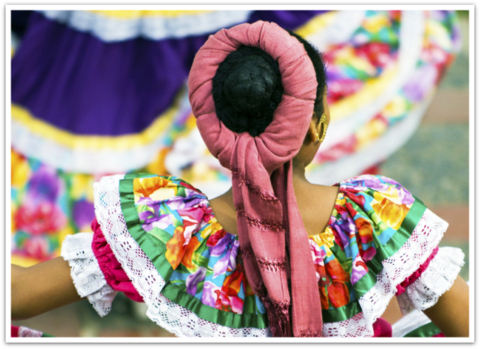 Guelaguetza – Folklore & Dance in Oaxaca
Guelaguetza – Folklore & Dance in Oaxaca
The Guelaguetza is largest festival in the state of Oaxaca and takes place every year at the end of July. Celebrating pre-Columbian traditions, it is held in the auditorium on the Cerro del Fortín. Local municipalities perform their most outstanding regional dances in front of a large audience in traditional and colourful clothes. Oaxaca is a culturally rich state and this festival honours the existence of cultures such as mixtecs, istmeños, people from the mountain regions and the coast who gather for a festival where colours, laughter, joy and local pride fill the boundaries of the Auditorium Guelaguetza on the hill. On arrival, the audience is welcomed by a group of brass musicians and when the first dancers enter the stage it is impossible not to be infected by the energy. A nice alternative, if you can’t make it to the Guelaguetza in July, is the Guelaguetza performance at the Hotel Quinta Real. This takes place every Friday evening and gives you a glimpse into the variety of traditional dances in the region. We would be happy to help you book tickets for this unforgettable show.
August
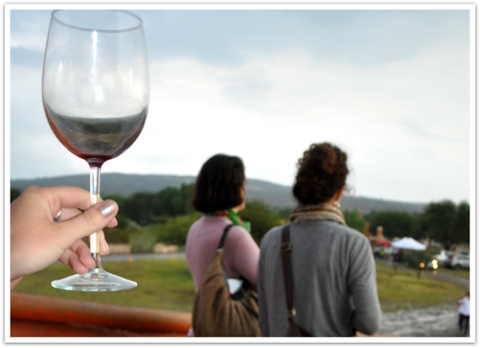 Vendimia – Wine Festivals Ensenada Baja California & Querétaro
Vendimia – Wine Festivals Ensenada Baja California & Querétaro
Every year in August the wine harvest festival (La Vendemia) takes place in Ensenada, Baja Californa to celebrate the season´s grape harvest. More than 50 different picturesque wineries in the famous wine regions of Valle de Guadalupe, Valle de Santo Tomas and Valle San Vicente take part and include many cultural events and concerts. Visitors crush the grapes with their feet in the traditioonal method of obtaining the juice. Accompanied by selected culinary dishes from local gastronomy and live music, this festival is an absolute must for wine lovers and foodies and can be perfectly combined with a tour of the Peninsula. La Vendemia is also celebrated in the State of Querétaro which is an up and coming wine region and has renowned wineries such as “Los Azteca”, “Freixenet” and “La Redonda”.
October
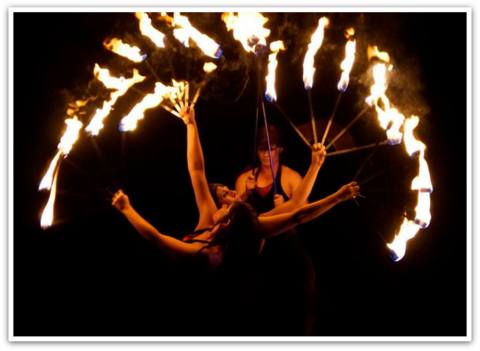 Cervantino – Cultural Festival in Guanajuato
Cervantino – Cultural Festival in Guanajuato
Every year Guanajuato hosts the most important art and culture festival in Latin America. As a mecca of culture, the colourful and cheerful city of Guanajuato is known worldwide as the host city of the Festival Cervantino. This takes place annually in October and is a month long festival sponsored by the State. With special emphasis on artistic works in Spanish language, stage art and music from all over the world. Its origins go back to the middle of the 20th century. At that time, short plays by Miguel de Cervantes Saavedra, author of Don Quixote de La Mancha, were performed in the city’s squares. It was officially inaugurated in 1972 and got its name in honour of Cervantes. The special thing about the festival is that the events take place all over the city, including squares, theaters, churches as well as outdoors. Even some historical buildings and museums generously offer their spaces for performances.
November
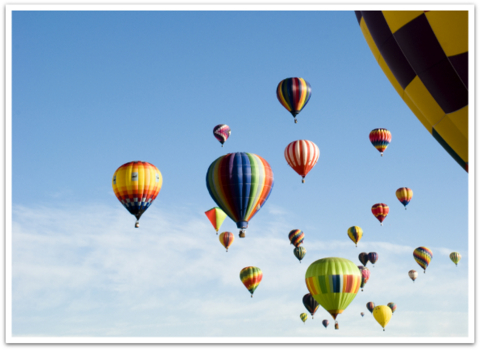 International Hot Air Balloon Festival in Leon
International Hot Air Balloon Festival in Leon
Every year in November in the city of Leon, thousands of hot air balloons rise into the air at the Festival internacional de Globo (FIG). The international hot air balloon festival was founded in 2002 with the participation of 27 hot air balloons. Since then, it has grown by 1,150% and the spectacle has been enjoyed and admired by over 2 million people in the past 11 years. It is currently the most important festival of its kind in Latin America and is recognized worldwide. In 2012, 200 hot air balloons with pilots from 15 different countries took part.
October/November
Film Festival Morelia
Morelia has hosted the International Film Festival, Festival Internacional de Cine de Morelia (FICM) since 2001 and it is one of the most important events in México dedicated to this art. Due to the growing interest in Mexican films worldwide, the idea is to bring Michoacan’s general audience together with cinema lovers and renowned filmmakers from around the world and to show and promote the works of new and talented directors. The International Film Festival is a showcase of local talent and now has an excellent reputation with critics and specialists because of the quality of the films presented,
November/December
International Book Fair Guadalajara
The Guadalajara International Book Fair, Feria Internacional del Libro (FIL) was launched in 1987 by the Universidad de Guadalajara and takes place annually at the Guadalajara Exhibition Center every year at the end of November/beginning of December. It lasts for 9 days and has established itself as the most important literary fair in Latin America and the Spanish-speaking world. After the book fair in Frankfrut, it is the second largest in the world. Every year there is a host country or region and in 2011 even Germany was the guest of honour, as the first country with a language other than spanish.
MEXICAN CUSTOMS & TRADITIONS
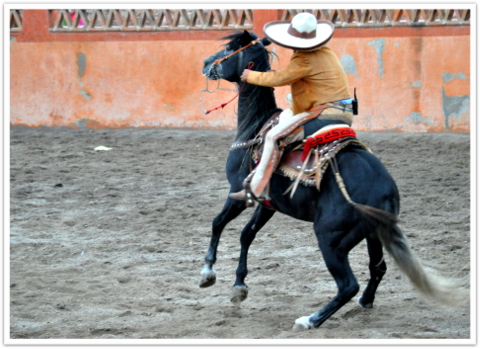 Charreadas
Charreadas
Charreadas are a type of Mexican rodeo that originated from the competitions of Mexican cowboys. However, this is not just a sport, but part of traditional Mexican culture. The origin of the charrería came from Mexican haciendas, as the workers demonstrated their skills in riding and lassoing. Nowadays charreadas are a competitive sport in traditional clothing, similar to and from which the Mariachis outfits are derived. This tradition is particularly well represented in the highlands and in the northwest of the country and is usually performed on Sundays.
<
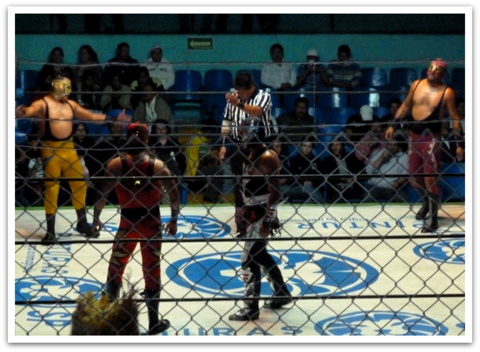 Lucha Libre
Lucha Libre
Mexican luchadors are celebrated like national heroes. Lucha Libre means wrestling in spanish and started in the early 1930s. With American wrestling as a role model, this popular sport is more about acrobatics and show than about the fight itself. However, the show also contains elements from myths and legends. The catchers, called Luchadores, slip into roles of saints, ghosts or characters from the comic monster world. The characters they play are supported by dazzling costumes and colourful masks that symbolize images of animals, gods, ancient heroes or other fantasy characters. The greatest disgrace of a luchador is when the opponent unmasks him during the fight. The Lucha Libre is definitely an exciting spectacle that should not be missed! (e.g. in Mexico City)
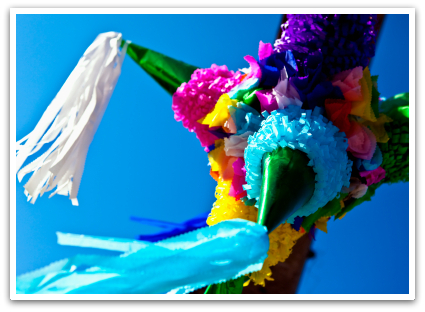 Piñatas
Piñatas
The Piñata is THE game on every child’s birthday and also on other festivities such as the pre-Christmas Posadas. These figures made of cardboard and covered with crepe paper are available in all variations and any form imaginable. Whether donkeys, stars or a cartoon characters – there are no limits to the imagination with the Piñatas. Filled with sweets and fruit, the piñatas are attached to a rope and swung back and forth just out of reach. Blindfolded and armed with a stick, one child after the other tries to hit the figure until the piñata finally breaks. As soon as the character is “smashed” and the delicious contents fall to the ground, everyone rushes in to collect and save thier treasure.
Posadas
These celebrations take place shortly before Christmas and represent Maria and Joseph’s search for a place to give birth to baby Jesus. Accompanied by a traditional song, two people dressed as Maria and Josef knock on the front door and ask for entrance. Their request is rejected for the first two times and entry is not granted until the third request. With Maria and Josef the other guests are then invited in and the Mexican fiesta can begin. A posada is usually a festive get together with family, friends and neighbours to drink ponche – a typical Mexican hot punch – and to celebrate the Christmas season.


